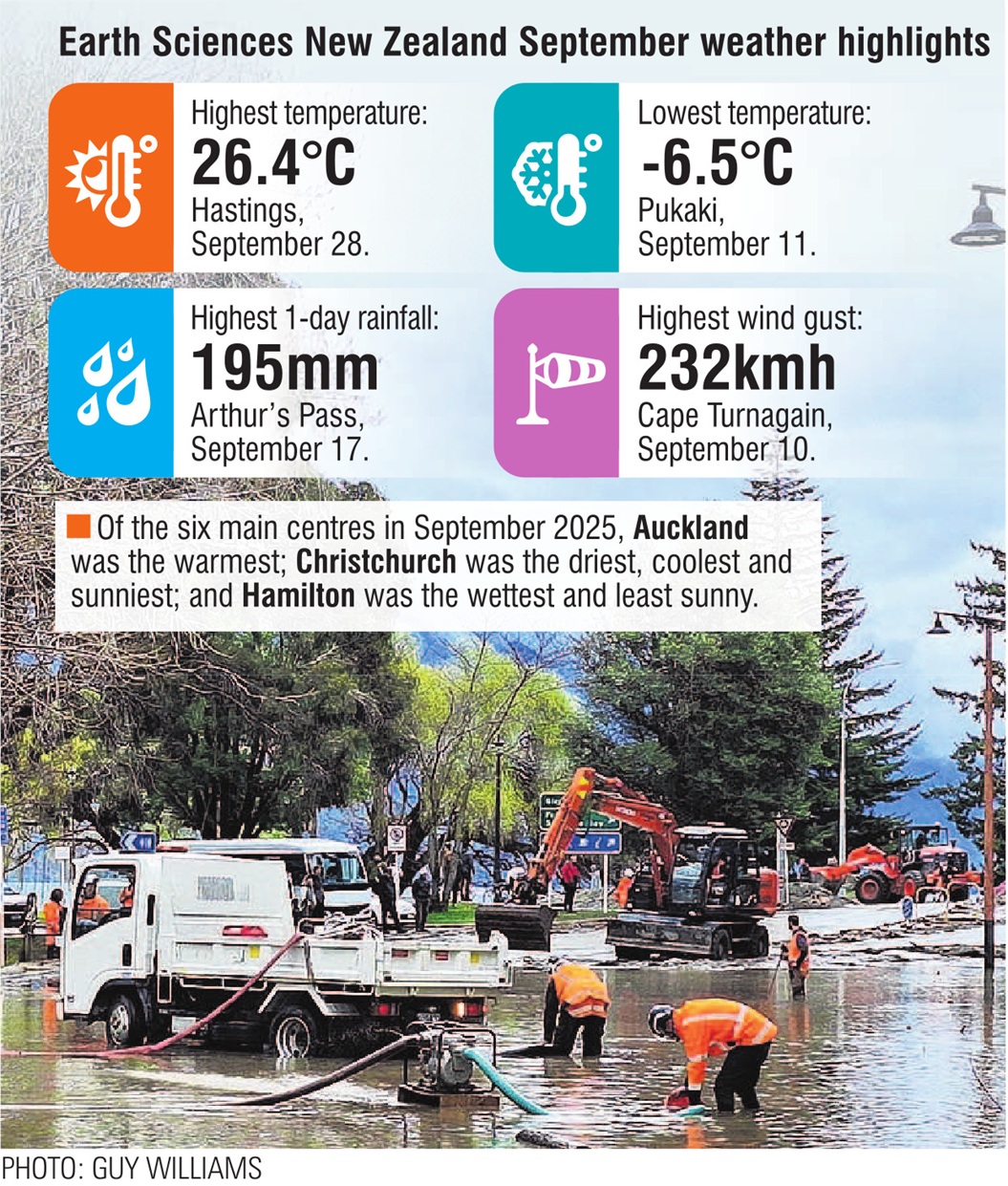
Earth Sciences New Zealand meteorologist Chester Lampkin said mean sea level air pressure during September was higher than normal across the top of the North Island and in the Pacific Ocean (north of New Zealand), while low pressure was strong and persistent across the South Island.
As a result, strong westerlies crossed the country, particularly the South Island, during the month.
"The result was a wet and unsettled month in the west of the South Island, with multiple gale wind events in the east of the South Island."
He said Enso-neutral (El Nino-Southern Oscillation) conditions remained present in the tropical Pacific, but as with August, La Nina-like patterns became more established during the month.
Sea surface temperatures around New Zealand were mostly above average, particularly off the west coast of the country, and marine heatwave conditions were experienced in these areas.
The nationwide average temperature in September was 11.3°C, which was 0.8°C above the 1991-2020 September average, making it New Zealand’s sixth-warmest September on record.
While the rest of the country had above average or well above average temperatures, Otago and Southland had near average temperatures during September, and Fiordland experienced below average temperatures.

Tiwai Point recorded its highest September rainfall when 203mm fell during the month and Manapouri (West Arm Jetty) recorded its second-highest with 852mm.
Queenstown observed considerably more than double its normal September rainfall, when it recorded 200mm (321% of normal).
On September 17, State Highway 6 was closed between Haast and Makarora due to surface flooding.
In Queenstown, the One Mile Creek roundabout and nearby roads were closed after a blocked culvert caused surface flooding.
In contrast, below normal or well below normal September rain fell in coastal Otago (including Dunedin and Oamaru).
New Zealand’s driest location relative to normal was Middlemarch, where just 12mm of rain (26% of normal) was recorded.
Across the southern regions, the rainfall left soil moisture levels lower than normal for parts of North Otago, higher than normal for inland and central parts of Otago and near normal for the rest of the regions in September, Mr Lampkin said.











